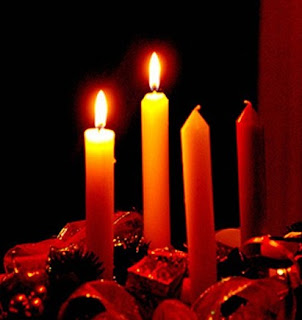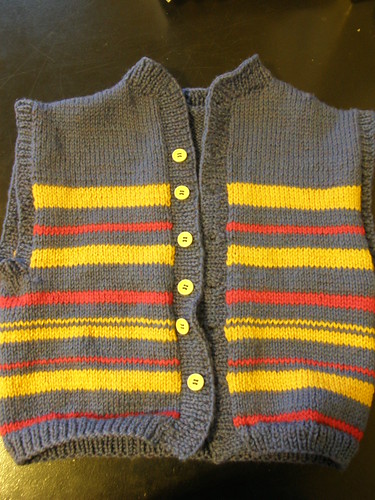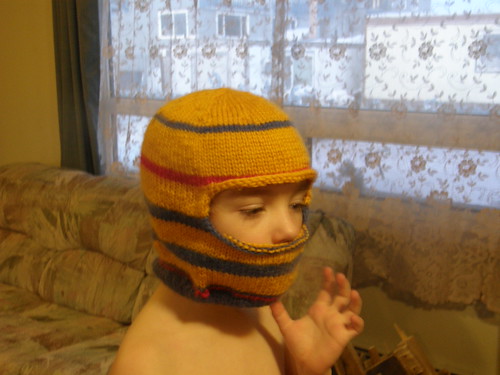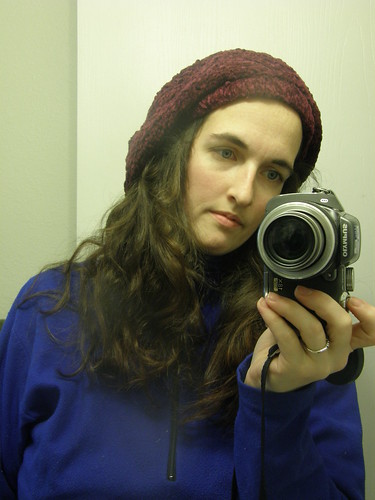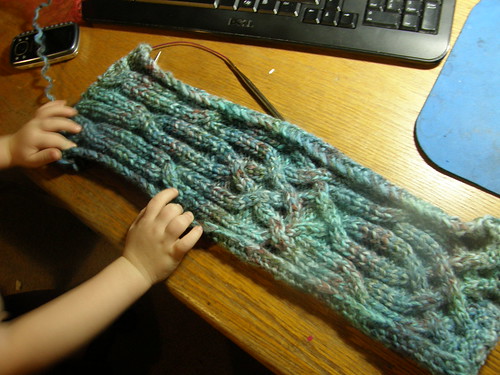This is the first of several excerpts from my grad school papers that I will share here on my blog. We were asked to read a short case study about a two week old infant, Sam, and then discuss factors that may be affecting his development (both explicitly mentioned in the case study or which we can logically infer). I'm not sure if it's kosher to re-print the actual assignment, so I'll give a short version here:
Sam was born six weeks early via cesarean section. He received oxygen support at birth (though not since), and spent three days in the hospital. His parents, Jane and Roberto, are first time parents. They live in a rural area and do not have many friends or neighbors. Jane drank periodically throughout the pregnancy, but increased toward the end when Roberto lost his job. She has requested 12 weeks off work following the birth, but is considering returning to work sooner. Sam wakes to eat every two hours, but never eats very much and does not sleep through the night. Jane's mother has offered to come live with them for a while to help out.
I felt that we would be expected to write about FASD, but in spite of the obvious potential for it I thought it was unlikely. So I took a chance on a different tack.
The professor said "Excellent. You brought in a lot of relevant information from expert sources and included several things I did not know." And then he selected it as one of the model papers to share with the class this week.
Without further ado:
Given the premise that Jane was consuming alcohol during her pregnancy with Sam, it is easy to jump to the conclusion that he has Fetal Alcohol Syndrome Disorder (FASD). While that is a possibility that should not be overlooked (and it would be wise for both Sam’s parents and his medical providers to watch for symptoms over the coming months or years), the case study does not provide sufficient data to point to FASD as a likely diagnosis. However there are things which the case study does point to.
Sam was born six weeks prematurely, so his difficulty breathing in his first minutes of life can easily be attributed to having underdeveloped lungs. His respiratory struggles could also be attributed to his cesarean birth. The pressure of the process of vaginal delivery stimulates the infant’s circulation and respiratory systems (Berk 2010), and babies born via cesarean are as much as twice as likely to need oxygen support as are infants born vaginally (Kamath et al, 2009 and Yakov et al, 2006). The case study also does not indicate why Sam was born via cesarean section; it is possible that he was already under distress prior to delivery, and that could also account for his need for oxygen support immediately after birth. Particularly since he has not needed respiratory support since that time, it is not likely that he has any long term breathing issues.
Sam’s cesarean birth may be important in another factor, which is how Jane has attached to him. Hillan noted that women who deliver via cesarean often have a harder time connecting with and attaching to their babies, perhaps due to the separation they experience during the hospital stay (1992), the interruption of the natural hormonal cycles experienced during vaginal delivery, or to the stress or pain of the experience of major abdominal surgery. Berk also notes that “the appearance and behavior of preterm babies can lead parents to be less sensitive in caring for them” (2010). These difficulties, combined with Sam’s fussiness and her own postpartum hormonal changes, are probably exacerbating an already overwhelming time for Jane in particular.
It is normal for a child of Sam’s age to need to eat every two hours. Because his diet is wholly liquid (whether breastmilk or formula) it is easily digested. Easy digestion is important for a newborn digestive system, but it does mean that digestion is also rapid, and that Sam will be hungry again soon (Pantley, 2002). There is nothing abnormal about his wanting to eat this often, but if Jane and Roberto are not aware of the normalcy of this behavior in their child, it may be stressful or worrisome to them.
It is also normal for an infant two weeks old to wake up frequently in the night. At this age, it would be unhealthy for him to sleep more than four or five hours at a stretch, and that is significantly less than “all night” in the eyes of most adults. In fact, it commonly is “a full year or even two until [a] baby will settle into an all-night, every night sleep pattern” (Pantley, 2002). This frequent night waking, though normal and appropriate for Sam, can put extra strain on Jane, especially when she returns to work. Therefore it would be wise for them to consider ways to help Jane get more rest. One alternative might be to breastfeed and bedshare, which would allow Jane to sleep while Sam eats. Another alternative would be to have Roberto (or Jane’s mother) take care of giving Sam bottles when he wakes at night, so that Jane can sleep.
Jane and Roberto are clearly under a lot of stress. Not only was Roberto recently laid off, but Jane, like most other mothers in the United States, is probably unpaid during her maternity leave (Geissler, 2005). The sleep-deprivation of having a newborn, along with the probability of difficulty connecting to her fussy baby, all combined with the financial stress of their situation has probably left her feeling obligated to return to work before the twelve weeks are over.
The stress of Roberto’s lost job during the pregnancy led Jane to drinking, but it also would have elevated her cortisol levels. Elevated cortisol during pregnancy can lead to premature birth (Field & Diego, 2008). Sam’s precipitous arrival was probably a cause of stress in its own right, as they were probably not prepared for him to come a month and a half before his due date. Field & Diego also explained that “analysis on the mothers’ prenatal cortisol and the newborns’ cortisol levels suggested that the mothers’ prenatal cortisol was a significant predictor of the newborns’ cortisol levels,” and further noted that “infants of high prenatal cortisol mothers have shown temperamental difficulties such as crying and fussing” (2008). This fussy behavior was particularly noted during the first few weeks of life (Field & Diego, 2008). It is probable that Sam’s fussiness is due to high cortisol levels, a residual effect of Jane’s having had elevated prenatal cortisol levels.
Finally, Jane and Roberto desperately need some support in their new role as parents. Berk quotes findings stating that “babies who are both preterm and economically disadvantaged require intensive intervention,” and that the effective interventions include “parent training sessions” along with “medical follow-up” (2010) The case study made no mention of Jane and Roberto having taken any childbirth classes, and it is probable that, in their socio-economic situation, they have not taken any parenting classes or read parenting books. Not only do they need the moral support of friends and family, but they also need the mentoring of professionals or more experienced parents. If Jane’s mother can come stay with them, it would probably be very helpful for everyone for her to do so
It sounds as though Sam got off to a somewhat rough start in life (with his premature arrival, cesarean delivery, and need of breathing assistance). It also seems that Jane and Roberto, as first time parents with little or no experience or education about babies, are feeling overwhelmed with all the changes in their family. However, Sam seems to be healthy and normal now. The family and Sam’s pediatrician should watch him to see if any symptoms of FASD develop, since it is known that Jane was drinking, but he does not show any signs of it at the present. It would be good for Jane’s mother to come provide help and support for Jane and Roberto for a few weeks or months as they adjust to this new life, and ideally they should seek other friends in their area, perhaps other young parents, who can be part of a new network for them. If Sam does end up showing symptoms of FASD, then it will be particularly important for Jane and Roberto to have a network of support as they undertake raising a disabled child.
Resources
Berk, L. E. (2010). Development through the lifespan (5th ed.). Boston, MA: Allyn & Bacon.
Field, T., & Diego, M. (2008). Cortisol: The culprit prenatal stress variable. International Journal of Neuroscience, 118(8), 1181¬–1205.
Geissler, J. (2005, July 26). U.S. stands apart from other nations on maternity leave. USA Today. Retrieved from http://www.usatoday.com/news/health/2005-07-26-maternity-leave_x.htm
Hillan, E. M. (1992), Maternal–infant attachment following caesarean delivery. Journal of Clinical Nursing, 1: 33–37. doi: 10.1111/j.1365-2702.1992.tb00053.x
Mayo clinic (2011). Fetal alcohol syndrome: Symptoms. Retrieved from
http://www.mayoclinic.com/health/fetal-alcohol-syndrome/DS00184/DSECTION=symptoms
Kamath, B. D., Todd, J. K., Glazner, J. E., Lezotte, D., & Lynch, A. M. (2009). Neonatal outcomes after elective cesarean delivery. Obstetrics & Gynecology, 113(6), 1231-1238. doi: 10.1097/AOG.0b013e3181a66d57
Pantley, E., (2002). “Newborn babies and sleep.” The no-cry sleep solution: Gentle ways to help your baby sleep through the night. New York: McGraw-Hill.
Yakov, R., Yee, W., Yue Chen, S., & Singhal, N. (2006). Oxygen saturation trends immediately after birth. The Journal of Pediatrics, 148(5), 590-594.
 An honor bee is a charm which the girl can earn after she has earned her medallion. She can actually earn as many as three bees, and does so by doing more goals, or helping other girls complete their experiences and projects.
An honor bee is a charm which the girl can earn after she has earned her medallion. She can actually earn as many as three bees, and does so by doing more goals, or helping other girls complete their experiences and projects.




